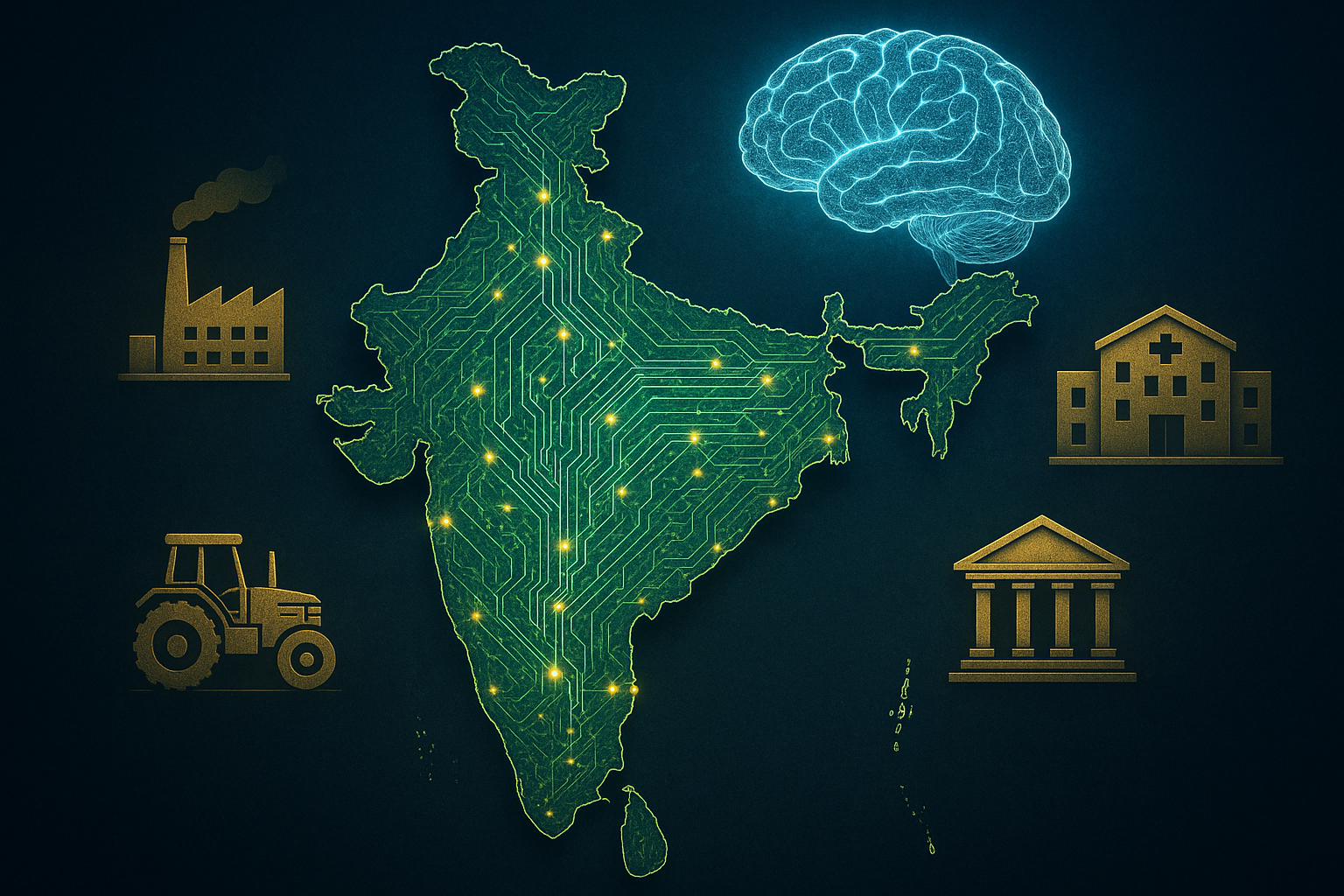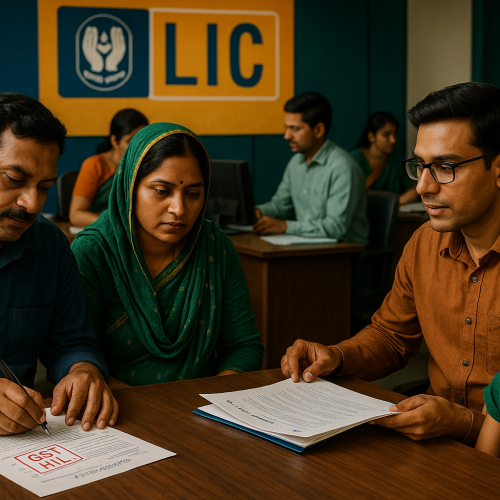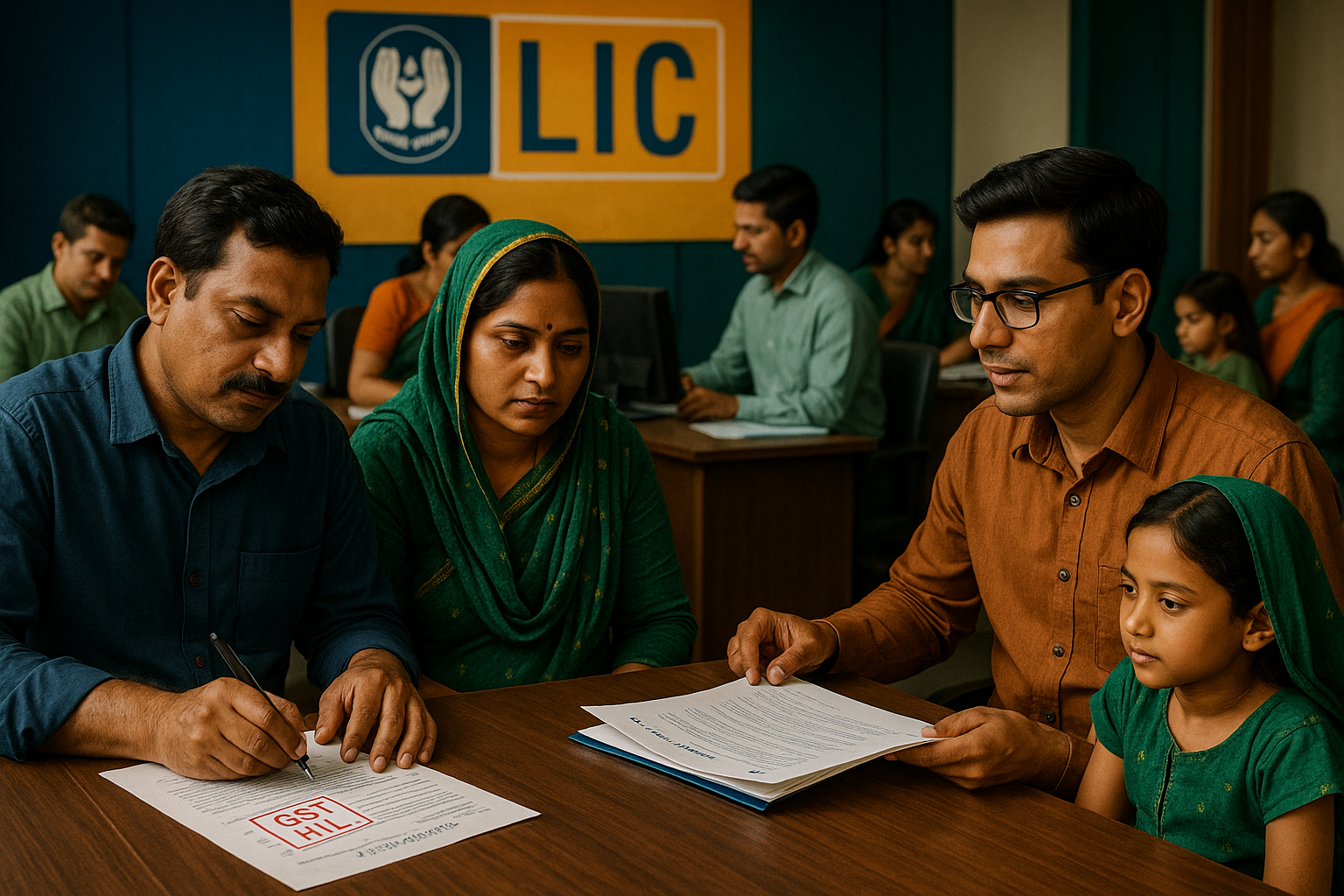A NITI Aayog report projects that accelerated adoption of Artificial Intelligence (AI) could add nearly $600 billion to India’s GDP by 2035, reshaping the nation’s growth trajectory. By embedding AI across sectors such as manufacturing, agriculture, healthcare, and financial services, India can strengthen productivity, innovation, and global competitiveness. However, this transformative opportunity requires a coordinated push in infrastructure, skilling, ethical regulation, and ecosystem partnerships.
Core Development
The report highlights India’s unique position to leverage AI at scale due to its digital public infrastructure, growing startup ecosystem, and robust IT talent base.
In manufacturing, AI can reduce costs, streamline supply chains, and increase export competitiveness.
In agriculture, predictive analytics and smart farming can boost yields and reduce waste.
In healthcare, AI-enabled diagnostics and telemedicine can expand access and improve outcomes.
In finance, AI will enhance fraud detection, risk management, and inclusion through smarter credit scoring.
By 2035, these applications could generate inclusive growth, provided India balances innovation with responsible governance.
Key Enablers for AI Growth
Digital Infrastructure: Expansion of high-speed internet, cloud, and advanced data centers.
Talent Development: National skilling programs for AI, ML, and data science professionals.
Policy Support: Clear frameworks for data privacy, security, and ethical AI practices.
Global Partnerships: Collaboration with leading AI research institutions and tech firms.
Stakeholder Impact
Businesses: Gain efficiency, better decision-making, and global competitiveness.
Startups: Greater opportunities for AI-based innovations in fintech, healthtech, and edtech.
Government: Improved governance and service delivery through AI-driven analytics.
Citizens: Wider access to financial services, healthcare, and agricultural solutions.
Industry & Policy Reactions
Industry experts welcomed the projection as a strategic validation of AI’s role in India’s growth model. Policymakers emphasized the need for inclusive adoption, warning against risks such as job displacement, algorithmic bias, and cybersecurity threats. The focus must remain on human-AI collaboration, not replacement.
Challenges Ahead
Skilling Gaps: Workforce readiness for AI-driven roles remains limited.
Data Ecosystem: Need for quality, interoperable, and secure datasets.
SME Adoption: Smaller firms may lack resources to integrate AI.
Global Competition: Ensuring India is not left behind in the global AI race.
Strategic Outlook
If harnessed responsibly, AI could become a pillar of India’s $5 trillion economy vision. With the right mix of innovation, policy, and global collaboration, India can position itself as a global hub for AI-led growth while ensuring equitable access and long-term resilience.
Why This Matters
AI is not just a tool—it is an economic multiplier. By embracing faster AI adoption, India could unlock $600 billion in GDP gains, reshaping its role in the global economy and ensuring sustainable, inclusive progress.












